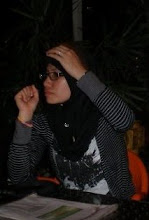Beginning Processes & Number
This week's lesson focused on developing computations in the early years. As the lesson went on, I managed to see that the processes involve in developing computations in the early years are in stages and the stages are:
1. Developing number concepts by matching one-to-one correspondence
2. Sorting by classifying quantity
3. Ordering by comparing more than 2 objects or more than 2 sets
4. Patterning by looking at visual representations
As we can see, these stages move from a simple process to a more complex process. This relates to a concept which Vygotsky classified as the Zone of Proximal Development where young learners are able to move to a more difficult level of tasks if they are scaffold by the adults (Morris, 2008).
In developing computations of the early years learners, I believe there should be a balance between accuracy and flexibility . Even for a topic as easy as counting, teachers should put emphasis on understanding of the one-to-one correspondence which is crucial in knowing how to count rationally, rather than teaching students memorization of number words in a given sequence. According to Unglaub (1997):
" Teaching a child to count isn't teaching her to understand math unless you teach her to touch another object for each additional number (2, 3, etc.) and other mathematical concepts involved in counting."
References:
Morris, C. J. F. (2008). Zone of proximal development. Retrieved August 30, 2008 from http://www.igs.net/~cmorris/zpd.html
Unglaub, K. (1997). What counts in learning to count?: Young Children, 52 (4), 48-50.

1 comment:
Patterning by looking at visual representations... I wonder what some of these visual representations might look like?
Post a Comment